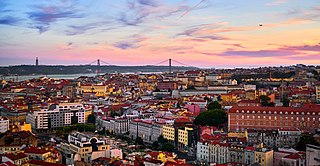
Lisbon is the capital and the largest city of Portugal, with an estimated population of 544,851 within its administrative limits in an area of 100.05 km2. Lisbon's urban area extends beyond the city's administrative limits with a population of around 2.7 million people, being the 11th-most populous urban area in the European Union. About 3 million people live in the Lisbon metropolitan area, making it the third largest metropolitan area in the Iberian Peninsula, after Madrid and Barcelona. It represents approximately 27% of the country's population. It is mainland Europe's westernmost capital city and the only one along the Atlantic coast. Lisbon lies in the western Iberian Peninsula on the Atlantic Ocean and the River Tagus. The westernmost portions of its metro area, the Portuguese Riviera, form the westernmost point of Continental Europe, culminating at Cabo da Roca.
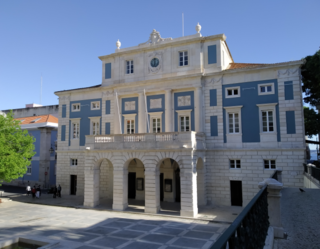
The Teatro Nacional de São Carlos is an opera house in Lisbon, Portugal. It was opened on June 30, 1793 by Queen Maria I as a replacement for the Tejo Opera House, which was destroyed in the 1755 Lisbon earthquake. The theatre is located in the historical center of Lisbon, in the Chiado district.

The Queen Maria II National Theatre is a theatre in Lisbon, Portugal. The historic theatre is one of the most prestigious Portuguese venues and is located in the Rossio square, in the centre of the city.
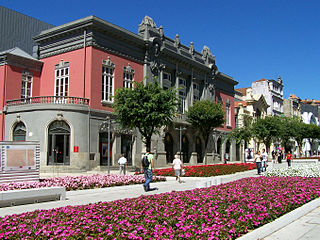
The Theatre Circo is a 20th-century, Portuguese revivalist theatre, in the civil parish of São João do Souto, municipality of Braga. Designed by the architect João de Moura Coutinho, it was first inaugurated on 21 April 1915 with a performance of Ruggero Leoncavallo's operetta La reginetta delle rose.

The Glória Funicular, sometimes known as the Elevador da Glória, is a funicular railway line in the civil parish of Santo António, in the municipality of Lisbon, Portugal. It connects the Pombaline downtown with the Bairro Alto, operated by Carris.
Milú was a Portuguese actor and singer.
The following is a timeline of the history of the city of Lisbon, Portugal.
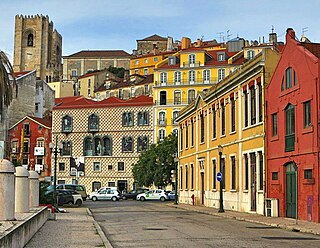
Lisbon is one of the most popular city destinations in Europe. The city of Lisbon and the Lisbon metropolitan area attracts a significant number of tourists each year, drawn to its historical and cultural heritage, good transportation connections and good touristic infrastructure.
Laura Alves was a Portuguese actor on stage, film and radio.
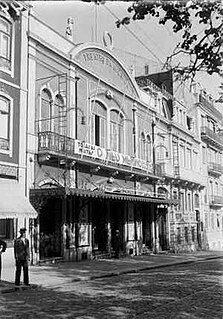
Teatro da Avenida, better known as Teatro Avenida, was a theatre located at 150 to 156 Avenida da Liberdade in the city of Lisbon, Portugal, which operated from 1888 to 13 December 1967, when it was completely destroyed by fire.
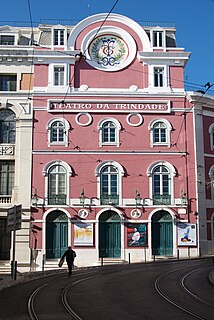
The Teatro da Trindade is a theatre in the Chiado neighbourhood of Lisbon, Portugal, built in the 19th century. It is one of the oldest theatres in Lisbon still in operation.
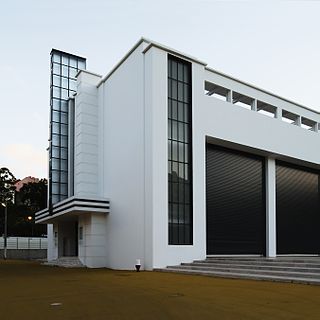
The Teatro Capitólio, officially called Cineteatro Capitólio - Teatro Raul Solnado, is located in Parque Mayer, in Lisbon, Portugal. It was opened in 1931. Because of its early modernist design it has been recognized as the first building of the Modern movement in Portugal and was declared a "Building of Public Interest" in 1983. Suffering from water damage, the theatre was closed in the 1980s and only finally reopened in November 2016 after extensive restoration.
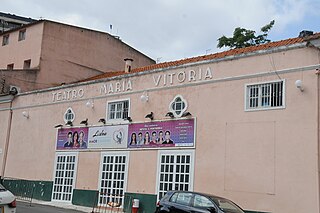
The Teatro Maria Vitória is a theatre in Lisbon, capital of Portugal. It is located in the theatre district of Parque Mayer.

Parque Mayer is a theatrical and entertainment district in the Portuguese capital of Lisbon. Originally created as a summer amusement park, it at one time had four theatres, although one was demolished in 2015 and another has not been used since 1992. Successive proposals have been made for upgrading the area, but none has yet come to fruition.

The Teatro da Rua dos Condes, or simply Condes, was a theatre in the Portuguese capital of Lisbon. It was opened in 1738 and rebuilt in 1755 after an earthquake. Never considered comfortable, it was demolished and rebuilt in 1888 and eventually converted to a cinema. After a further demolition and reconstruction as a purpose-built cinema, the building now houses a Hard Rock Café. For part of its life the Teatro da Rua dos Condes was one of Lisbon's major theatres, attracting the city's elite, including the Royal Family. However, with the construction of newer, more modern theatres it gradually moved from offering operas and legitimate theater to vaudeville and revues with more of a mass appeal.

The Teatro do Ginásio was a theatre in Lisbon, Portugal that mainly concentrated on performances of comedy shows.

Teatro do Salitre was one of the first theatres in Lisbon, capital of Portugal. It opened on 27 November 1782, changed its name to Teatro de Variedades in 1858, and was demolished in 1879. For much of its existence it was one of the two leading theatres in Lisbon, together with the Teatro da Rua dos Condes. Lisbon also had the Teatro Nacional de São Carlos, which was mainly dedicated to opera. The Salitre was situated close to the area that later became Lisbon's theatre district, known as Parque Mayer.
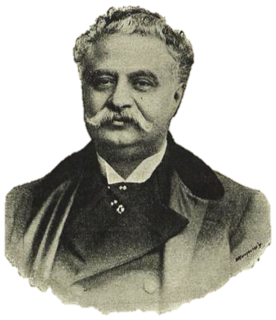
António de Sousa Bastos was a Portuguese writer, playwright, theatre entrepreneur and journalist. Author of the Diccionario do theatro portuguez, he was the husband of the actress Palmira Bastos.

The Teatro D. Fernando was a theatre in the Portuguese capital of Lisbon between 1849 and 1860.

















